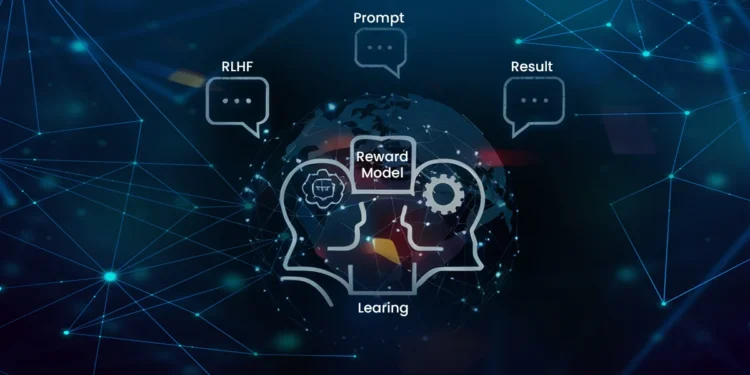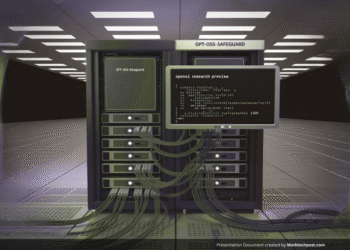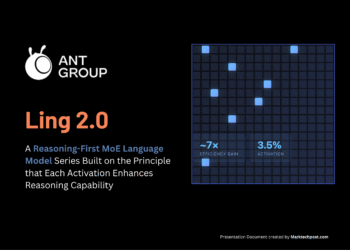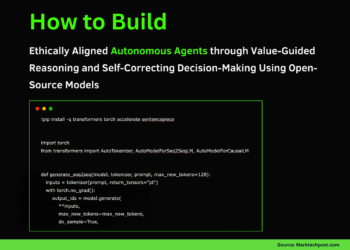The latest trends in AI suggest that more data doesn’t guarantee better generative AI models. Pretrained models learn general patterns from large datasets, but they don’t inherently understand what quality or helpfulness means in a specific field. The right expertise, however, can transform a generic model into a specialized, high-performing system in record time. RLHF is one of the most effective LLM optimization techniques that allows humans (domain experts) to rate, rank, or demonstrate model outputs. The model learns to prefer answers that experts deem correct, safe, or useful.
In recent years, AI development has undergone a fundamental shift. Instead of relying solely on brute-force computational power and massive datasets, the most successful systems now leverage the irreplaceable value of human expertise through RLHF. This transition moves the focus from quantity-driven training to quality-guided development, where strategic human involvement drives efficiency, safety, and alignment at unprecedented scales.
Unlike machines that rely purely on statistical patterns, human experts provide contextual understanding that creates richer, more efficient training signals. For example, a radiologist can guide AI diagnostic tools with subtle distinctions that would require millions of examples to learn autonomously. A doctor doesn’t just see a collection of pixels in an X-ray, instead, he understands the patient’s symptoms, medical history, and subtle variations that distinguish a benign finding from a serious one. Pure pattern recognition, even at a massive computational scale, can’t replicate this. Similarly, a legal expert can teach models the intricacies of contract interpretation in ways that raw data alone cannot achieve.
RLHF has become a pivotal technique for fine-tuning large language models. It enhances their ability to capture the subtleties of human communication, enabling them not only to generate more human-like responses but also to adapt dynamically to expert feedback. This article explores the mechanisms, challenges, and impact of RLHF in advancing next-gen AI systems.
What is RLHF?
Reinforcement Learning from Human Feedback (RLHF) is a machine learning technique that helps unlock the full potential of large language models. The perfect example is OpenAI’s GPT-3. Although GPT-3 was released in 2020, it wasn’t until the RLHF-trained version, ChatGPT, that the technology became an overnight sensation. ChatGPT captured the attention of millions and set a new standard for conversational AI.

In RLHF, an AI system’s learning process is enriched with real human insights, making it uniquely suited for tasks with complex and ill-defined goals. A reward model is first trained using direct human feedback, which then guides reinforcement learning to optimize model performance. For example, it would be impractical for an algorithmic solution to define ‘funny’ in numeric terms. However, human labelers can easily rate jokes generated by an LLM. Those ratings are distilled into a reward function, which in turn improves the model’s ability to write jokes.
RLHF is particularly valuable for Natural Language Processing (NLP) tasks that require a human touch. By integrating human feedback, pre-trained LLMs become adept at producing coherent, context-aware, and useful outputs that align closely with human goals and preferences. The process relies on a feedback loop where human evaluators rate or rank the model’s outputs, and those evaluations are used to adjust the model’s behavior over time.
How RLHF Works
RLHF emulates the way humans learn through trial and error, motivated by strong incentives to succeed. The process of fine-tuning a pre-trained model with RLHF typically involves four phases:
Pretraining models
RLHF is generally applied to enhance and fine-tune the capabilities of existing pre-trained models. For example, RLHF-refined InstructGPT models outperformed their GPT-3 predecessors, improving factual accuracy and reducing hallucinations. Likewise, OpenAI attributed GPT-4’s twofold improvement in accuracy on adversarial questions to the integration of RLHF in its training pipeline.
The benefits of RLHF often outweigh the advantages of scaling up training datasets, enabling more data-efficient model development. OpenAI reported that RLHF training consumed less than 2 percent of the computation and data needed for the pre-raining of GPT-3.
Supervised fine-tuning (SFT)
The process begins by selecting a pre-trained language model. Before reinforcement learning is introduced, the model is primed through supervised fine-tuning to generate outputs that better align with human expectations.
As described earlier, large pre-trained LLMs have broad knowledge but are not inherently aligned with user preferences. Pretraining optimizes models to predict the next word in a sequence, but this can lead to accurate yet unhelpful, or even harmful, outputs. Simply scaling up improves raw capability but does not teach the model user intent or preferred style.
Supervised fine-tuning addresses this gap by training the model to respond appropriately to different kinds of prompts. Domain experts create prompt-response pairs to teach the model to respond to different applications, such as summarization, Q&A, or translation.

In short, the SFT phase of the RLHF process primes the base model to understand user goals, language patterns, and contexts. By exposing it to diverse linguistic patterns, the model learns to generate coherent and contextually appropriate outputs and to recognize various relationships between words, concepts, and their intended usage.
Reward model training (using human feedback)
In this stage, human annotators rank multiple responses generated by the LLM for the same prompt, from best to worst. This feedback is then used to train a separate reward model that captures human preferences. The reward model translates these preferences into a numerical reward signal.
Designing an effective reward model is crucial in RLHF, as it serves as a proxy for human judgment, reducing complex human preferences into a form that the model can optimize against. Without a scalar reward, the RL algorithm would lack a measurable objective. Instead of relying on rigid, hand-coded rules, the reward model scores responses based on how well they align with human preferences.

The primary goal of this phase is to provide the reward model with sufficient training data, particularly direct human feedback, so it can learn how humans allocate value across different responses. Essentially, the reward function does not aim to label answers as strictly “right” or “wrong.” Instead, it aligns model outputs more closely with human values and preferences.
Policy optimization
The final step in RLHF is to use this reward model to update the language model (policy). However, the question is how strongly the reward model should be used to update the LLM? Too aggressive updates may cause the model to overfit to pleasing the reward function instead of staying a robust and generalizable language model.
Proximal policy optimization (PPO) is considered one of the most effective algorithms for addressing this challenge. It is specifically designed to make stable, incremental updates, preventing the model from changing too much in a single training step. Unlike most ML and neural network model architectures, which are trained to minimize errors using gradient descent, reinforcement learning models are trained to maximize rewards using gradient ascent.

However, if you train the LLM with only the reward signal, the LLM may change its parameters (weights) too aggressively. Instead of genuinely improving its responses, the model could end up “gaming” the system—producing text that scores high on the reward model but fails to make sense to humans. PPO introduces guardrails by constraining how much the model can change in each training step. Rather than allowing dramatic leaps in the model’s weights, PPO enforces small, controlled updates. This ensures steady learning, prevents over-correction, and helps the model stay close to its original abilities while still aligning with human preferences.
Why RLHF?
Here are some of the most prominent reasons to employ RLHF in AI development:
- Injecting human preferences: Pretrained language models are trained on large datasets, but they only learn general patterns and don’t inherently know the subtle nuances of specific fields such as medicine, law, or finance. RLHF enables domain experts to rate, rank, and demonstrate model outputs, helping the model learn to prefer answers that experts consider correct, safe, and useful.
- Domain-specific fine-tuning: LLMs trained on general internet text might struggle with nuanced terminology and domain-specific jargon because they lack exposure to specialized datasets. RLHF incorporates expert feedback directly into the training process, refining the model for a particular domain.
For example, RLHF can be applied to build a medical assistant model, with doctors reviewing its outputs. They guide the model to avoid speculative diagnoses, prioritize evidence-based responses, minimize false positives and negatives, and flag uncertain cases for human review. This makes the model behave more like a responsible medical assistant. - Bias and safety control: Publicly sourced training data often contains bias and sensitive information, which models can learn and reproduce in their predictions. Through RLHF, human evaluators mitigate harmful, biased, or legally risky outputs by training the model to avoid them.
- Improving task-specific performance: For specialized tasks such as clinical trial data analysis or contract summarization, RLHF trains models to generate responses correctly, stick to factual accuracy, and follow task-specific conventions (such as, citing sources, producing structured data, or maintaining a particular tone).
- Iterative alignment: RLHF is not a one-time process. It can be applied in iterative cycles, with each round of human feedback making the model more aligned with real-world expert expectations. Over time, these repeated adjustments help the model become highly specialized and perform as though it were naturally trained for a given field.
RLHF at Cogito Tech
Frontier models require expertly curated, domain-specific data that generalist workflows can’t provide. Cogito Tech’s Generative AI Innovation Hubs integrate PhDs and graduate-level experts—across healthcare, law, finance, and more—directly into the data lifecycle to provide nuanced insights critical for fine-tuning large language models. Our human-in-the-loop approach ensures meticulous refinement of AI outputs to meet the unique requirements of specific industries.

We use various LLM alignment and optimization techniques that help refine the performance and reliability of AI models. Each technique serves specific needs and contributes to the overall refinement process. Cogito Tech’s LLM services include:
- Custom dataset curation: We curate high-quality datasets, define precise labels, and minimize data noise and bias to enhance model performance—backed by a world-class team of experts who provide top-quality human feedback, the cornerstone of any RLHF project. Our expertise spans healthcare, law, finance, STEM, and software development, including QA, full-stack engineering, and multi-language support.
- Reinforcement learning from human feedback (RLHF): Subject matter experts at Cogito Tech evaluate model responses for accuracy, helpfulness, and appropriateness. Their feedback, like rating jokes to teach humor, refines the model’s output. We ensure efficient model retraining with instant feedback and expertise in complex labeling pipelines.
- Error detection and hallucination rectification: Systematic identification and correction of errors or false facts to ensure trustworthy results.
- Prompt and instruction design: Development of prompt-response datasets across domains to strengthen a model’s ability to understand and follow human instructions.
Conclusion
Trained on extensive datasets, large language models have broad knowledge but aren’t inherently aligned with user needs. They use patterns learned from the training data to predict the next word(s) in a given sequence initiated by a prompt. However, they can produce unhelpful or even harmful content if left unchecked.
Simply scaling up improves raw capability but can’t teach the model your intent or preferred style. In practice, LLMs still misinterpret instructions, use the wrong tone, generate toxic outputs, or make unsupported assertions. In short, scale alone yields general text proficiency, but not task-specific helpfulness or safety.
RLHF is a human-in-the-loop fine-tuning process that aligns an LLM to human preferences using techniques such as supervised fine-tuning, reward modeling, and RL policy optimization. This pipeline integrates nuanced feedback into the model. This fine-tuning method uses far less compute and data than pretraining. Despite the small footprint, it unlocks latent abilities by reinforcing the right behaviors. In effect, RLHF teaches the model how to use its knowledge (tone, style, correctness), rather than just giving it more knowledge.
















